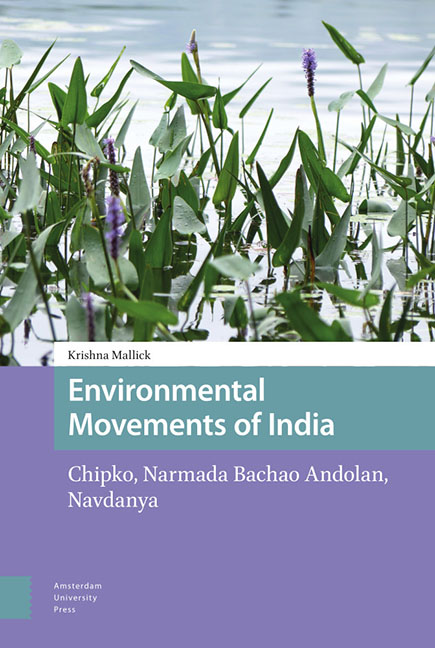Book contents
- Frontmatter
- Dedication
- Contents
- Acknowledgments
- Foreword
- Glossary
- Introduction: Three Grassroots Movements That Made a Global Impact
- 1 Historical and Cultural Contexts in India
- 2 Chipko (Hug the Trees) Movement
- 3 Narmada Bachao Andolan (NBA): Save the Narmada
- 4 Navdanya (Nine Seeds) Movement
- 5 Moral Implications of Environmental Movements
- 6 Hindu Ethics and Ecology
- Conclusion: The Symbiosis of Natural Resources and Local Needs
- Index
3 - Narmada Bachao Andolan (NBA): Save the Narmada
Published online by Cambridge University Press: 13 November 2021
- Frontmatter
- Dedication
- Contents
- Acknowledgments
- Foreword
- Glossary
- Introduction: Three Grassroots Movements That Made a Global Impact
- 1 Historical and Cultural Contexts in India
- 2 Chipko (Hug the Trees) Movement
- 3 Narmada Bachao Andolan (NBA): Save the Narmada
- 4 Navdanya (Nine Seeds) Movement
- 5 Moral Implications of Environmental Movements
- 6 Hindu Ethics and Ecology
- Conclusion: The Symbiosis of Natural Resources and Local Needs
- Index
Summary
Abstract
After tracing the history of dam-building, specifically the Sardar Sarovar Project in the Narmada river which traverses the three states of Gujarat, Maharashtra, and Madhya Pradesh, this chapter analyzes the Narmada Bachao Andolan protest movement which started in the 1980s and was led by Medha Patkar and others following the Gandhian method of satyagraha. The NBA took the SSP to the Indian Supreme Court with the help of the World Bank, leading to the suspension of the project for a short time. The NBA is continuing its efforts to obtain a proper rehabilitation policy for the indigenous population (adivasi) displaced by the SSP, as the government has infringed on the right to survival of the people living around the dams. The NBA has made a global impact by launching a dialogue about biodiversity and sustainability.
Keywords: Sardar Sarovar Project (SSP), Medha Patkar, sustainable development, gender justice, adivasi
The Narmada Bachao Andolan (NBA) or ‘Save the Narmada’ movement originated in the 1980s as a protest against the building of dams in the Narmada River, a major waterway flowing across the Indian states of Madhya Pradesh, Maharashtra, and Gujarat. The movement was led by a woman, Medha Patkar, and was embraced by poor indigenous people who were displaced due to the dam-building. Whereas the Chipko movement a decade earlier had focused attention on preserving access to forest resources by local people, the NBA insisted that those people whose rights to local resources cannot be protected due to development – of a dam, for example – should be compensated as well as resettled. In this way, economic justice is served. Dam-building, like forest clear-cutting, has a long colonial and postcolonial history in India. By 1999, India had become the world's third largest dambuilder, trailing only China and the United States.
The specific target of the NBA's protests was the development of the Sardar Sarovar Project (SSP), the second largest of 30 very massive dams that were part of a larger plan for 3,000 dams in India. Today, the SSP has one of the largest canal networks in the world. The primary rationale for building the dam was to provide irrigation and drinking water, but as a multipurpose dam and canal system, it also produces electrical power.
- Type
- Chapter
- Information
- Environmental Movements of IndiaChipko, Narmada Bachao Andolan, Navdanya, pp. 59 - 82Publisher: Amsterdam University PressPrint publication year: 2021



